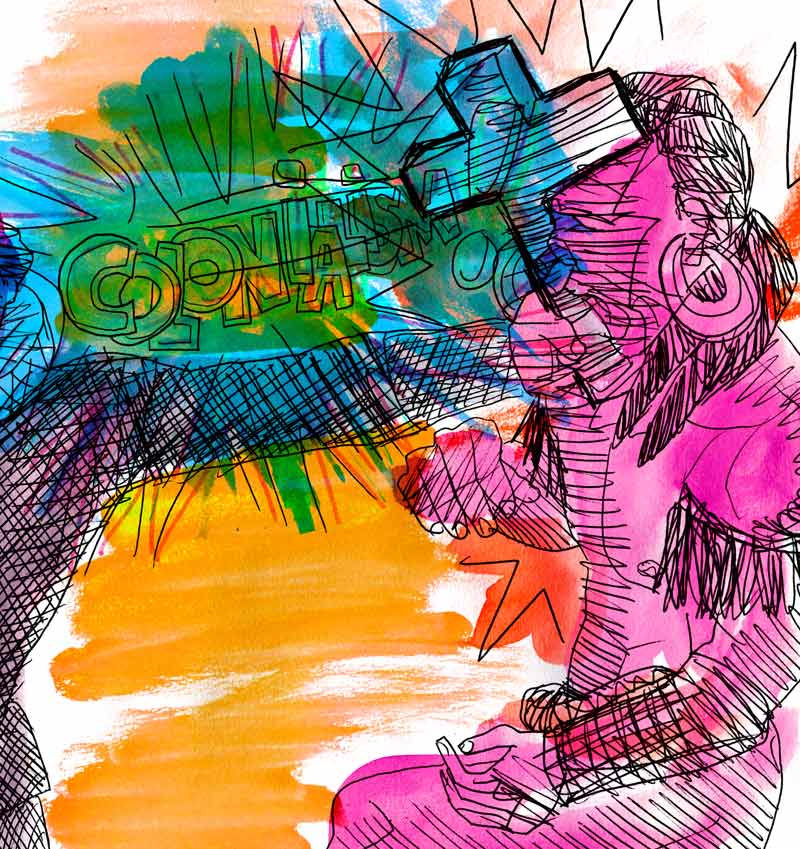From left to right, the top sequence shows nature-based religion (ritual with Naga statues on Alor Island), Hinduism (two Balinese women making offerings in a temple), Islam (two men praying with a mosque in the background) and Christianity (a seventeenth century ‘pikbroekgeus’ (sailor) with a Bible and a cross).
The latter image of the Christian sailor connects to the verse Saint Matthew gospel displayed by the building’s main entrance, and refers to Jesus’ instruction to his disciples, ‘Therefore go and make disciples of all the nations, baptising them in the name of the Father and the Son and the Holy Spirit; teaching them to observe all that I commanded you’ (Matthew 28:19). The presence of the seventeenth century figure suggests that even though Christianity was not official VOC policy, it was part of colonialism from the start. Organised missionary work didn’t truly get off the ground until the nineteenth century. The Bible here represents Protestantism, the cross Catholicism. The man on the left is from Nias, where the Protestants were active, and the man on the right is a Marind-Anim from South Papua, where the Catholics had a presence. An interesting detail about the Islamic scene: although the building’s other ethnic types are more anonymous, in this case sculptor Louis Vreugde asked an unknown Turkish man to pose for him to ensure an accurate depiction.
The lower sequence represents the main agricultural crops: tobacco, sugar, rice and rubber. Noteworthy is the tobacco scene, with a woman breastfeeding her infant. The child holds a cigarette. Was this a reference to the mother’s occupation or a critique of her parenting qualities? Several of the female workers are bare-breasted, even though the then-Director of Anthropology disapproved of this. Even without these erotic undertones, however, the reliefs emphasise the distance between coloniser and colonised through clothing, rituals and activities. The contrast between the covered-up ‘missionary’ and the half-naked men and women in sarongs or loincloths is marked.









